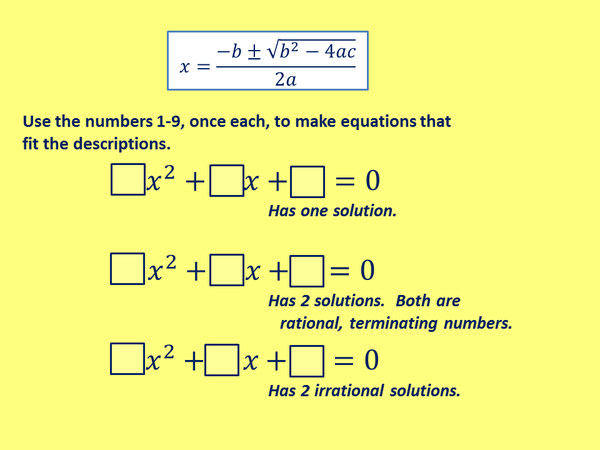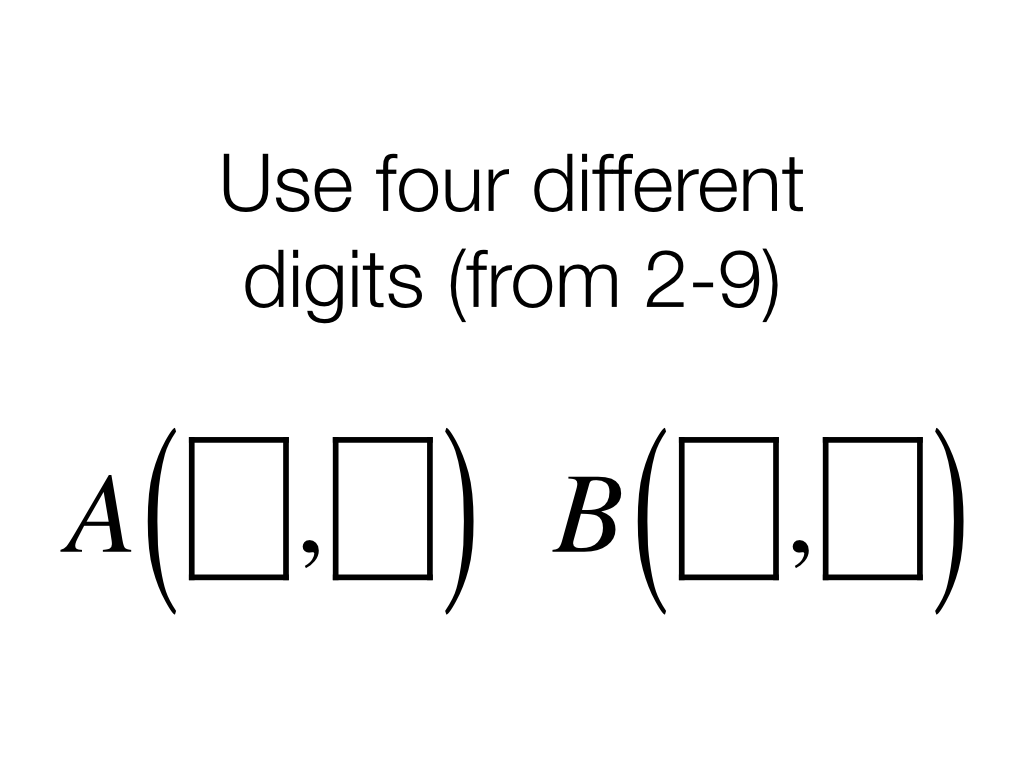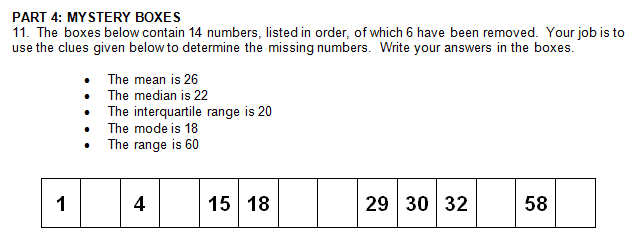12 of 30 Items .... Type: Open Middle
Problems, Questions, and Puzzles to spark discussion and argument in the maths classroom.
Navigation:
- by Source
- by Course
.... - Problem Type: 101 Things
3ACT
ASN
ChatGPT
Combinatorics
Comparisons
Constructions
Create a Problem
DebateMath
Definitions
DESMOS Art
Desmos Challenge
DoThis
Epiphany
Equity
Explainer
Find the Error
Find the Pattern
Game
Geometry Snacks
Graphicacy
Graphical Approach
How Many Ways?
How Many?
Illusion
Impossible Problem
MathArt
MathStrategy
MathTip
Meme
Mimizu
Modeling
New
New Understanding
Notation
Notice, Wonder
Number Theory
Number_Search
Number_Talks
Open Middle
Optimization
Pedagogy
Policy
Proof Without Words
Puzzle
Rates
Ratios & Proportions
Raw Pure Math
Regressions
Sensible?
Sidewalk Chalk
Smart Substitution
Starters
Strategy
Terminology
The Hook
The RealWorld
Topology
Understandings
VennWords
Wait. Really?
WCYDWT
What If
What is This?
What Questions
Which Would You Choose?
WODB
Yohaku
. . . View This Fullsize
How many different solutions can we find?

.: [ALG2], [T.R.Milne], [Open Middle].
. . . View This Fullsize

3
Challenges
- Use four different digits (from 2-9) to create two points which determine a line with the greatest possible slope.
- Use four different digits (from 2-9) to create two points which determine a line with the least possible slope.
- Use four different digits (from 2-9) to create two points which determine a line with a slope as close to zero as possible.
What does "greatest" slope mean?
What does "least" slope mean ... most negative?
.: [ALG1], [Robert Kaplinsky], [Open Middle].
. . . View This Fullsize
There's a neat game you can play with the English language: Place the word "only" anywhere in the sentence. How does it change the meaning?
Only she told him that she loved him.
She only told him that she loved him.
She told only him that she loved him.
She told him only that she loved him.
She told him that only she loved him.
She told him that she only loved him.
She told him that she loved only him.
She told him that she loved him only.
What would it look like if we were trying to create a math problem that worked the same way, except "only" is replaced by the equals sign?
.: [Language], [Curmudgeon], [Open Middle].
. . . View This Fullsize
This problem, from Robert Kaplinsky, asks for you to fill in the spaces.

Being the ornery sort, I wondered if there were other coefficients that we could choose for the cubic that might give multiple sets of answers?
.: [ALG2], [Robert Kaplinsky], [Open Middle].
. . . View This Fullsize
Following on from yesterday's question, we have a puzzle from the same source.
Which of those central tendency statistics are necessary in order to find the missing numbers? (Necessary meaning that you can't find a particular number without it.)
In other words, do we really need all five statistics?

.: [STATS], [internet], [Open Middle].
. . . View This Fullsize
Here is a list of numbers.

You create a new problem this time ... what hints will you give?
What values of mean, median, mode, range, quartiles?
Can you create a solvable problem with just two hints?
Or do we need three?
.: [STATS], [internet], [Open Middle].
. . . View This Fullsize
Here is a list of numbers.

You create the problem ... what hints will you give?
What values of mean, median, mode, range, quartiles?
What are some different statistics that you could give to a classmate (other than the ones below) yet still keep this a solvable problem, with the same answers as the original problem?
Original problem:
mean = 76;
range = 32; IQR = 21
.: [STATS], [internet], [Open Middle].
. . . View This Fullsize
Here is a list of numbers.

What information would you NEED in order to determine the missing numbers?
If you want to solve the original problem yourself, you can go there and look for the rest of the problem and a discussion on finding the answers, but here is the set of numbers provided:
mean = 76;
range = 32; IQR = 21
.: [STATS], [internet], [Open Middle].
. . . View This Fullsize
Insert parentheses into each of the following expressions so that each will have the same value.
\( 4 + 3 * 7 - 4\)
\(2 * 3 + 3 * 5\)
\(2 * 5 - \frac{1}{2} * 10 * 9\)
\(3^2 ÷ \frac{1}{3} + 3 * 6\)
.: [ALG1], [internet], [Open Middle].
. . . View This Fullsize
Can you create a 10-digit number, where the first digit is how many zeros in the number, the second digit is how many 1s in the number etc. until the tenth digit which is how many 9s in the number?
Some hints:
Can it be 0000000000?
Can it be 9000000000?
One answer, slightly obfuscated, is 2³ * 5³ * 7 * 887143
.: [LOGIC], [internet], [Open Middle].
. . . View This Fullsize
A Challenge from StandupMath:
Can you arrange the integers 1 to 17 so that each adjacent pair adds to a square number?
Hey!
What if we didn't put them all in a straight line? What's possible if you do that?
.: [LOGIC], [internet], [Open Middle].
. . . View This Fullsize
It's a well-known formula ... your age divided by two, and add seven. If your date is any younger than that, it's just creepy.
By this calculation, what is the youngest you are allowed to go on a date?

.: [ALG1], [T.R.Milne], [Open Middle].